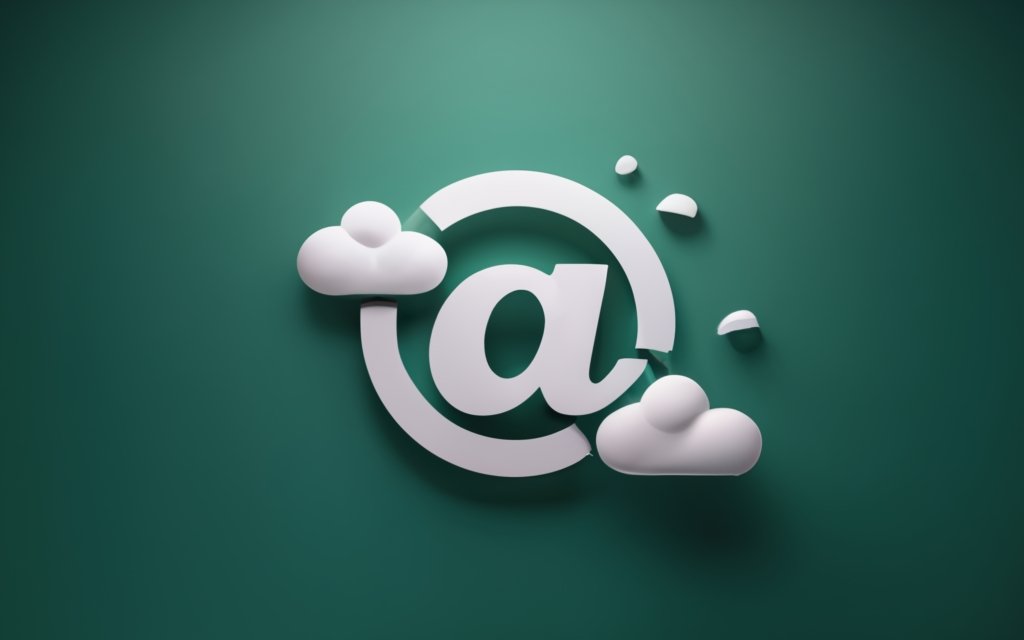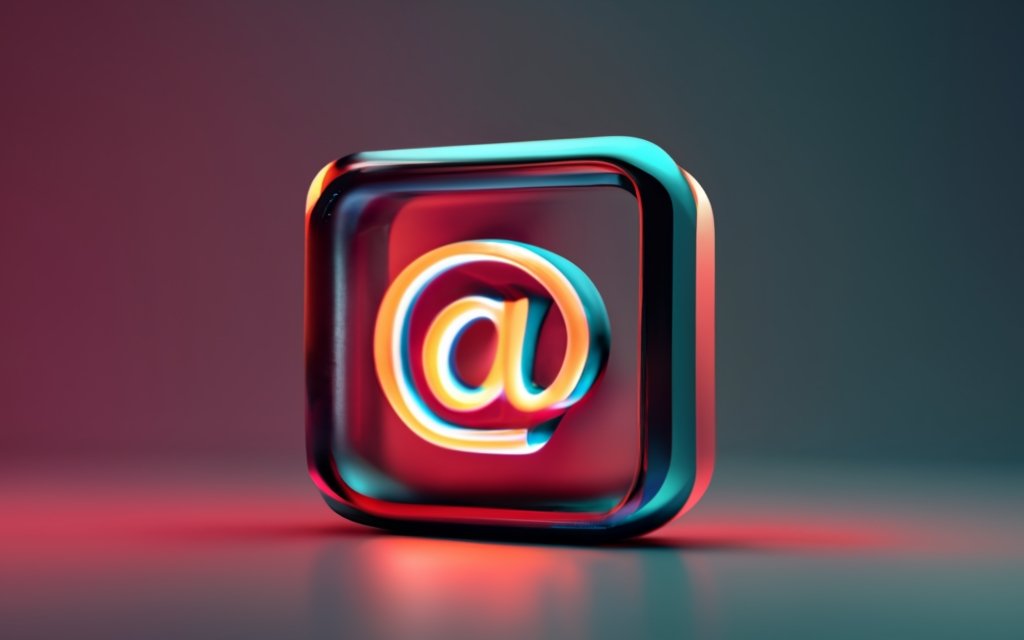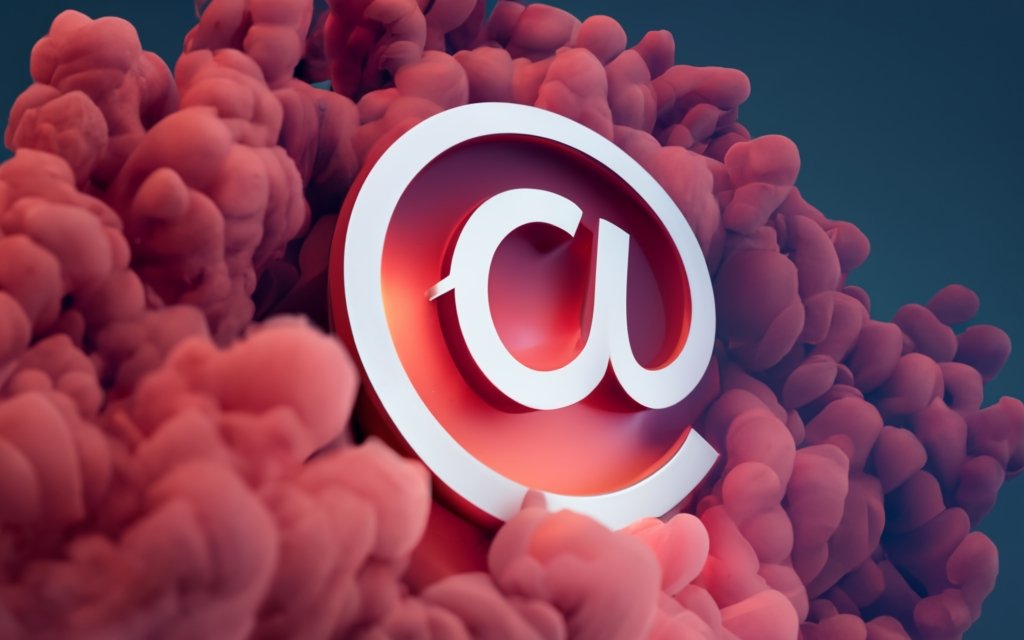Email signatures may seem like short, forgotten spaces tucked under messages, but they hold immense potential for driving brand, traffic, and conversions. This comprehensive guide will explore how to create professional signatures that captivate readers. We’ll cover critical strategies for design, promotion, implementation, optimization, and management at scale. Whether looking to upgrade an existing signature or develop a coordinated approach across your company, you’ll find tips to amplify your brand and boost results with every email you send. Let’s dive in!
What are Email Signatures and Why are They Important?
An email signature is a block of text automatically inserted at the bottom of an email message. Also known as an email footer, it contains information about the sender such as name, job title, company, phone number, website, and other contact details.
Email signatures serve many important purposes:
Professional Branding
A professional email signature gives your messages a polished, corporate look. It transforms a bare email into a marketing opportunity and helps present the sender as credible and established.
Without a signature, an email can seem informal, impolite, or even suspicious. The lack of sender information creates uncertainty about who the email is from and whether they can be trusted.
A proper signature establishes your professional identity. It associates you with your company and position, demonstrating your qualifications. The inclusion of a logo and color scheme reinforces brand recognition.
Promote Business and Services
An email signature provides a space to highlight your business offerings right in the inbox. Savvy companies include value propositions, calls-to-action, and links to products/services in the footer.
For example, a marketing agency can include “Driving growth through data-backed campaigns. See our case studies here: [Website Link]”
A real estate agent may add “Search listings and schedule showings at [Website Link]”
This presents relevant offers directly to customers and prospects while serving as a constant reminder of what your company does.
Advertising and Marketing
Signatures allow businesses to advertise special promotions, offers, events, content downloads, and more.
Some effective ways companies leverage signatures for marketing include:
- Discount codes – Special savings like “Take 20% off your first order with code WELCOME20” help incentivize purchases.
- Webinars/events – Promote an upcoming webinar with “Reserve your spot at our 2023 Strategy Webinar on March 15” and a registration link.
- Ebooks/whitepapers – “Download our 2022 Digital Transformation Whitepaper [link]” prompts readers to consume gated content.
- Surveys – “Take our quick customer satisfaction survey [link]” allows you to collect feedback.
- Social campaigns – “Follow us on Instagram @companyhandle for special giveaways!” builds awareness.
As you can see, the options are virtually endless when using signatures for marketing purposes. Just focus on short, impactful messaging that compels readers to engage further.
Contact Information
At their core, email signatures allow senders to convey their contact details in an easily accessible format. Readers can immediately find phone numbers, emails, locations, websites, and social media profiles right in the message itself.
Rather than digging through previous emails or external sites, recipients have this vital contact information on hand. Signatures eliminate friction and make it easier for customers and prospects to reach out with sales inquiries, questions, and other needs.
Build Trust and Credibility
A properly formatted email signature communicates professionalism and attention to detail. It gives readers confidence they are corresponding with a legitimate, trusted source.
Signatures that include industry certifications like “Jane Doe, PMP, CSM” help establish credibility through proven expertise.
Likewise, legal disclaimers add an extra level of formality and compliance: “Securities offered through Company XYZ, Member FINRA/SIPC.”
Including a headshot or logo makes communication more personal by putting a face to a name. Readers feel a connection that builds goodwill and trust.
In summary, email signatures serve a variety of important purposes that ultimately allow senders to portray themselves as reliable professionals. A thoughtful, well-crafted signature enhances your brand and identity, while promoting your offerings and making it easy for recipients to engage further. Definitely take the time to optimize your signatures to take advantage of this powerful email real estate.

Email Signature Best Practices
Crafting an effective email signature requires balancing brevity, branding, usefulness, and compliance. Follow these best practices to create professional signatures that make a great impression.
Ideal Length and Design
Avoid overly long signatures that take up excessive space in an email thread. Stick to 2-5 lines of text at most. Anything longer risks annoying recipients and cluttering inboxes.
List information in order of importance with the most vital details like name and company at the top. Omit unnecessary content and replace it with links to additional resources.
Keep the design clean and minimalist to improve readability. Use consistent brand colors and fonts but don’t go overboard with loud designs. Maintain a professional aesthetic appropriate for business communication.
Recommended Elements
While personalization is encouraged, signatures should include certain basic elements at a minimum:
Name and Job Title
List your full name and job title to establish your identity and credentials. For example:
John Smith
Senior Marketing Manager
Company Name and Logo
Your company name helps indicate who you represent. The addition of a logo aids brand recognition and gives a more official appearance.
Acme Corporation [Logo]
Contact Information
Share relevant contact details like phone numbers, email addresses, locations, and websites to make it easy to get in touch. Only include information you are comfortable being publicly visible.
Email: [email protected]
Phone: 555-123-4567
Office: 123 Main St, San Francisco, CA
Website: acmecorp.com
Social Media Links
Adding clickable links to your social profiles allows readers to follow and connect with you across platforms. Icons help identify each network visually.
Facebook / LinkedIn / Twitter / Instagram
Links to Services/Websites
Strategically placed links to your website, products, or services enable publicity right in the inbox.
See how we can help your business grow: acmecorp.com/services
Legal Disclaimers
Certain industries require legal disclaimers in emails to comply with regulations. Keep these concise and add them toward the bottom.
*Securities offered through XYZ Brokerage Inc., Member FINRA/SIPC. Investment advisory services offered through XYZ Advisory Group, Inc., an SEC Registered Investment Advisor.
Image Recommendations
Visual elements like headshots and logos add personality and reinforce branding. Follow these tips for selecting signature images:
Professional Headshot
A headshot helps put a face to your name and makes communication feel more personal. Use a high-quality, friendly photo of just you on a neutral background. Avoid casual snapshots, group photos, or distracting backgrounds. Crop the image square or circle.
Company Logo
Incorporate your logo to establish brand familiarity. Optimal dimensions are around 100 x 100 pixels. Save logos at twice the display width and height to keep images sharp on high resolution screens. Use SVG or PNG formats for lossless quality.
Banners/Graphics
Promotional banners can advertise offers, events, content downloads, etc. Keep these distinct from other elements and link them to relevant landing pages. Recommended size is 650 x 100 pixels.
Ideal Dimensions and File Size
For all visuals, aim for dimensions of 300 x 100 pixels and under 50KB in file size. Larger images slow email loading and crowded signatures diminish readability. Proper sizing optimizes display across platforms.
Mobile Optimization
With over half of emails opened on mobile, signatures must be legible on small screens.
Responsive Design
Email clients automatically scale signatures to fit but horizontal space remains limited. Keep signature width below 400 pixels so text doesn’t extend beyond the mobile viewport.
Legible Text
Font sizes under 11 pixels become difficult to read on mobiles. Increase text styling to 12-14 pixels or larger. Restrict entire signatures to 2-5 lines max.
Email Signature Examples by Industry
Effective signatures should align with your profession. Here are examples tailored for various industries:
Real Estate Email Signatures
Real estate agents rely heavily on referrals so their signatures should provide many options for contacts and connections.
Sarah Lee
Real Estate Advisor
Email: [email protected]
Phone: 555-867-5309
Facebook / Instagram / LinkedIn
Search listings at realty.com
123 Main St, Austin TX
Lawyer Email Signatures
Legal email signatures require special disclaimers to meet industry compliance standards.
John Smith, Attorney at Law
Smith & Associates LLP
Phone: 555-123-4567
Email: [email protected]
*This message is confidential and may be legally privileged. If you are not the intended recipient, please immediately notify the sender, delete this email, and do not disclose or rely on any information contained herein.
Sales Email Signatures
Sales focused signatures should make it easy for prospects to learn more and convert.
Mike Johnson
Senior Account Executive
555-123-4567 | [email protected]
LinkedIn / Facebook / Twitter
See how we help companies like yours boost revenue by 20%. Learn more at acmecorp.com/sales
Executive Email Signatures
Executive signatures convey leadership authority while maintaining approachability.
Liz Hanson
Chief Executive Officer
Acme Corporation
555-123-4567
[email protected]
acmecorp.com
Healthcare Email Signatures
Healthcare signatures should provide credentials to establish trust and expertise.
Dr. Sarah Chang
Pediatrician
555-123-4567
[email protected]
LinkedIn
123 Health Clinic Rd, Houston TX
healthclinic.com
Education Email Signatures
Educational signatures showcase academic qualifications and invite collaboration.
John Smith, Ph.D
Professor of Physics
State University
Office: 123 University Hall
Email: [email protected]
Research page: stateuni.edu/physics/john-smith
Let’s connect on LinkedIn
In summary, optimize your signature for your profession while following the universal best practices provided. Aim for an email signature that looks great on any device, provides valuable contact information, establishes expertise, and aligns with your brand identity.

Creating Effective Email Signature Banners
Email signature banners allow you to highlight promotions, offers, content, and more to recipients right in their inbox. Follow these tips to design high-impact banners that drive engagement.
Purpose of Banners in Signatures
Adding a banner to an email signature serves several key purposes:
- Promote new offerings – Announce product launches, feature updates, service additions, etc.
- Advertise promotions and sales – Spotlight deals, coupons, contests, limited-time offers, and other specials.
- Drive event registration – Increase signups for webinars, conferences, seminars, and other events.
- Distribute gated content – Offer downloads of ebooks, whitepapers, guides, and other premium assets.
- Build awareness – Draw attention to social campaigns, brand initiatives, certifications, and company news.
- Collect feedback – Encourage survey participation, reviews, and other types of feedback.
- Generate leads – Motivate visitors to convert through strong calls-to-action.
In short, a banner gives you dedicated real estate to get any message across to your email recipients. It appears prominently at the top of the signature, making it one of the very first things readers will notice.
Best Practices for Signature Banners
Follow these guidelines to maximize the impact of your email signature banners:
Clear Call-To-Action
Every banner needs a strong call-to-action (CTA) to prompt the desired behavior. CTAs like “Register Now,” “Get Your Free Copy,” or “Learn More” clearly tell readers your expectation.
Avoid vague CTAs like “Click Here” or generic statements like “New Product Release.” Drive specific actions instead.
Relevant Offer/Message
Ensure your banner message relates to the offer or landing page it links to. Don’t use misleading language just to attract clicks.
If your CTA says “Download the Report,” send readers to the report download – not your homepage. Maintain context.
Clickable Link
The entire banner should be clickable/tappable to make accessing the linked page as easy as possible. Avoid small buttons that are tough to tap on mobile.
Link to pages that convert – product sites, registration forms, content downloads, etc. Don’t send readers into a site menu.
Prominent But Not Distracting
Make banners stand out with contrasting colors and make use of whitespace appropriately. But don’t overwhelm the signature.
Keep banner height modest in proportion to other elements. Retain sufficient whitespace around text and CTAs for easy scanning.
Match Banner Image to Message
Reinforce your promotion using supportive imagery. Don’t just stick any stock photo in the banner.
For example, use a photo of your new product, an image related to the offer, screenshots of the gated content, etc.
Types of Email Signature Banners
Some popular categories of signature banners include:
New Product/Service Promotions
- Announce product launches
- Spotlight feature updates
- Advertise new service offerings
Discount Codes/Sales
- Highlight coupon codes and discounts
- Advertise limited-time-only sales
- Promote contests and giveaways
Events/Webinars
- Drive registrations for upcoming events
- Encourage event and webinar signups
- Promote virtual event participation
Ebooks/Whitepapers
- Offer downloads of gated content
- Promote new guides, reports, and ebooks
- Distribute educational collateral
Social Media Campaigns
- Build social followers and engagement
- Increase social shares and participation
- Drive traffic to social media profiles
Mix up your banners to keep content fresh and relevant. Swap out designs as you have new offerings or seasonal promotions to share.
Ideal Banner Size and Dimensions
Most email clients do not require image banners to be a set size to properly render them. However, for ideal display, aim for these dimensions:
Width: 650 pixels
This allows the entire banner to be viewed in common email preview pane widths without getting cut off.
Height: 100 pixels
This keeps the banner height proportional without consuming too much signature space.
File Size: Under 100KB
Large file sizes slow email loading. Compress images to optimize file size.
Note that banners will scale responsively in mobile, appearing smaller on screen. That’s okay, as long as text remains legible.
For non-image banners, limit text to 1-2 concise sentences and use fonts sized 16px and larger.
Tips for Great Email Signature Banner Design
Follow these design practices for attention-grabbing, effective banners:
Use Brand Colors/Fonts
Incorporate brand colors and typography to make your banners feel integrated with your signature and email aesthetics.
Doing so improves brand recognition and familiarity.
Craft an Attention-Grabbing Graphic
Think visually to portray your promotion. Offer graphics, product shots, illustrations, and photos to convey the message creatively.
Avoid text-only banners. Images entice interaction.
Use Minimal, Impactful Text
Keep written content to a minimum. The goal is a clear CTA, not long-form copy.
Use brief descriptive headers like “Black Friday Sale!” and strong imperative CTAs.
In summary, email signature banners enable you to constantly advertise offerings and campaigns through a dedicated signature space. Optimizing banner size, design, content, and calls-to-action gives your messages the maximum possibility of driving desired behaviors with each email you send.

Implementing Email Signatures for Businesses
To portray a professional brand image and effectively promote your company, a carefully implemented email signature strategy is essential. Here are best practices for deployment and management.
Company-Wide Default Signature
Establishing a standardized default signature ensures all employee emails align with your brand identity and policies.
Maintains Branding Consistency
A consistent signature design with uniform fonts, colors, and imagery strengthens company recognition. Recipients instantly identify the sender.
Projects Professional Image
Default signatures give all emails a polished look compared to no signature. This instills confidence in your professionalism.
Makes Adding/Removing Employees Easy
Automatically push updates to the default template across all users. Easily onboard new hires and remove ex-employees.
Management Tips
- Keep core elements consistent but allow some customization like contact details.
- Update promo banners/messaging regularly to keep signatures fresh.
- Use merge tags to auto-populate employee details in the template.
- Enforce signature use company-wide through policies. Disable ability to remove.
Custom Signatures by Department
While a single default covers basics, specialized signatures for departments with unique needs add relevancy.
Tailor Messaging by Team
Sales teams can feature calls-to-action relevant to converting leads. Support can provide access to help portals. Legal can include additional disclaimers.
Promote Department Offerings
Highlight service offerings specific to each department. Add links to tailored landing pages.
Management Tips
- Determine which departments can benefit from customization. Start small.
- Build department signatures using the same styling as default for consistency.
- Give leads to teams for managing own signatures while enforcing standards.
- Update any department signatures if the main default branding changes.
Centralized Management Platforms
Administering signatures is smoother with dedicated software. Here are top options:
Hosted Solutions
Products like Newoldstamp, Exclaimer, CodeTwo and WiseStamp offer robust signature management capabilities and easy integration.
Email Client Integrations
Native platforms like G Suite and Office 365 provide basic signature functions through their respective admin consoles.
Key Platform Features
- Signature creation wizards and template galleries
- Bulk deployment to users
- Auto-sync contact details from directory
- Usage tracking and analytics
- Permission controls by admin, user, department
- Native and third-party app integrations
Training Employees on Signature Usage
User adoption training ensures correct implementation across your organization.
Communicate Email Signature Policies
Inform staff about mandatory standardized signatures, personalization allowances, promotional guidelines, and usage protocols.
Provide Setup Instructions
Give step-by-step instructions for applying default signatures in email clients. Share troubleshooting tips.
Signature Etiquette
Train on best practices like maintaining signature consistency across emails and lists, appropriate promotional content, and professional representation.
In summary, centrally administering signatures and guiding employees on proper use provides extensive business benefits. Signatures strengthen branding, aid promotions, and project credibility when thoughtfully implemented across an organization.
Managing Work and Out of Office Email Signatures
Strategically managing signatures for scheduled time off improves communications and productivity.
Automated Signatures for Time Off
Set up auto-replies to notify senders of vacations, holidays, and other absences.
- Customize Dates and Messages – Tailor the exact date range and details based on the type of leave.
- Personalize with Name – Use merge tags to add the recipient’s name automatically.
- Route Email to Covering Colleagues – Automatically CC managers or co-workers handling coverage.
Configure Work Schedules and Office Hours
Indicate typical response windows like 9am-5pm.
- Set Expectations on Response Times – Curb assumptions you operate 24/7.
- Show Coverage Hours – Displays availability if working non-traditional shifts.
In summary, purposefully managing signatures for out of office and working hours makes communications more efficient. Recipients gain greater context while you maintain productivity.
Optimizing Email Signatures for Deliverability
Careful optimizations help ensure your signatures consistently reach the inbox. Avoid triggers that might cause emails to be blocked or flagged as spam.
Avoiding Spam Filters
Email spam filters scrutinize messages and may block those appearing questionable. Signatures should steer clear of triggers.
Use Appropriate Length and File Size
Excessively long signatures consuming multiple screens heighten spam risks. Stick to 2-5 lines of text and under 150KB total file size.
Only Use Relevant Images
Avoid random stock photos that don’t relate to your content. Spam filters may flag images with unclear purposes as suspicious.
Don’t Use Misleading Text or Offers
Spam filters penalize misleading language, far-fetched claims, and “too good to be true” offers. Keep text honest and realistic.
Gradually Warming Up New Signatures
When transitioning to a substantially new signature, take measures to safely ramp up usage.
Start with Low Volume Usage
Initially use the new signature on a limited subset of emails to gauge deliverability. Slowly increase volume as performance allows.
Monitor the Spam Folder
Check spam folders of the test recipient sample for any signatures flagged. If found, determine needed adjustments.
Make Adjustments as Needed
If signatures land in spam, optimize the design, length, images, links, etc. to remedy the triggers causing issues.
A gradual warmup allows you to catch deliverability issues early before they affect all recipients. Adjust as required to ensure strong inbox placement.
Fixing Common Signature Errors in Gmail
Gmail signatures occasionally have display issues. Here are some troubleshooting tips:
Resolve Character Limits
Gmail cuts signatures over 8kb in size. Reduce length by:
- Condensing contact information
- Removing unnecessary text
- Linking to pages rather than including long URLs
Compress Images Causing Errors
If images show broken icons or don’t display at all:
- Shrink image file size under 100kb
- Use recommended dimensions (80x200px)
- Host images on external servers rather than attaching
In summary, fine-tune signatures to seamlessly slip into inboxes. A slow, methodical warmup paired with error monitoring ensures your signature engages recipients as intended. Signatures that reliably appear professional, legitimate, and relevant tend to avoid deliverability pitfalls.

Email Signature Software and Tools
Dedicated technology platforms make central management and bulk distribution of signatures vastly more efficient. Here are top solutions to consider.
Leading Email Signature Software Options
Robust third-party software provides extensive capabilities beyond basic email client tools.
Brandmail
- Tightly integrated with Microsoft Outlook
- Automates contacts syncing from ActiveDirectory
- Real-time signature updates across users
- Promotion capabilities through banner ads
- Usage analytics dashboard
Xink
- Cloud-based for easy access from anywhere
- Drag-and-drop editor to build HTML templates
- Schedule upcoming marketing banners
- Multi-language support
- Native integrations with Gmail and Office 365
WiseStamp
- Simple banner creation tools
- Pre-designed templates for inspiration
- Bulk deployment to individuals and teams
- Automated syncing from company directories
- Chrome extension for Gmail management
Newoldstamp
- Customizable templates with merge fields
- Permission controls by group and user
- Email tracking to monitor engagement
- API support for deep integrations
- Straightforward pricing based on number of users
Exclaimer
- Recommended by Microsoft and Google
- AI-optimized templates for every need
- Automate banner content updates
- Detailed analytics on email performance
- Available fully online or on-premise
CodeTwo Email Signatures
- Manages signatures directly within Office 365
- Inserts banners, logos, images easily
- Allows personalization while ensuring consistency
- Legal disclaimers to cover liability
- Out-of-office auto-responder capabilities
Built-In Email Client Capabilities
Native platforms have basic but handy signature features.
G Suite
- Simple signature editor in Gmail settings
- Create multiple signatures and swap between them
- Change signatures on mobile apps too
- Templating capabilities through Google Workspace add-ons
Office 365
- Define default signature centrally in Admin Portal
- Apply policies to enforce signature use
- Support for graphics and images
- Sync user details from Active Directory
- Native Outlook integration on desktop
Key Email Signature Software Features
Look for these capabilities when evaluating solutions:
Design Template Library
Pre-built templates speed up implementation and provide inspiration.
Customization Options
Tailor templates with colors, fonts, layouts, images, etc. to match branding.
Bulk Deployment
Push signatures to individuals, teams, departments, or organization-wide.
Usage Tracking and Analytics
Measure adoption, clicks, metrics to optimize templates over time.
A/B Testing
Experiment with different signature variants to determine most effective.
Native Client and App Integrations
Support seamless use across email clients, mobile, web apps, and more.
Centralized Management Dashboard
Administer all signatures, users, analytics in one unified platform.
Tips for Choosing Software
- Assess number of users needing signatures to determine pricing models.
- Compare capabilities against current and future needs.
- Evaluate ease of use, implementation, maintenance requirements.
- Check for platform-specific requirements like Mac or PC-only.
- See if free trials are offered to test drive products firsthand.
By standardizing on a dedicated platform, companies can gain efficiency, flexibility, and visibility over their email signatures in ways basic client tools can’t match. The right software becomes an invaluable asset for brand management and promotion through this unique channel.
Key Takeaways and Next Steps
Let’s recap the key points covered in this guide and outline actionable steps to put email signatures to work for your business.
Recap of Key Points
- Email signatures project professionalism and credibility.
- Signatures present opportunities to advertise offerings directly in the inbox.
- Standardized signatures aligned to branding give a polished, consistent image.
- Specialized signatures allow teams like sales, support, and legal to customize messaging.
- Banners highlight time-sensitive promotions, content offers, events, and campaigns.
- Careful design, sizing, and warmup help signatures reliably reach inboxes.
- Dedicated software solutions enable centralized management at scale.
- Signatures for scheduled time off set expectations and ensure coverage.
Checklist for Optimizing Existing Signatures
If improving current signatures, ensure they:
- Follow brand guidelines for color, font, logo usage
- Are concise and scannable – 2-5 lines of text
- Contain essential contact details and social media links
- Use properly sized and compressed images (under 100KB)
- Have a strong call-to-action in banners to drive clicks
- Are free of spam filter triggers like misleading text
- Display legibly across desktop and mobile
- Adhere to any relevant industry regulations
Recommendations for Implementation
Those creating new signatures should:
- Audit business needs and identify key Uses cases
- Craft segmented templates for departments as warranted
- Select a signature management platform if scaled deployment needed
- Gradually ramp up new signature volume while testing deliverability
- Provide employee training on proper signature usage
Where to Find Templates and Tools
Take advantage of resources like:
- Software vendors’ template galleries for inspiration
- Easy drag-and-drop editors to build HTML templates
- Pre-designed templates aligned to different industries/roles
- Free HTML generators for basic text-only signatures
- Email banner makers to highlight promotions
Next Steps for Readers
The world of email signatures holds great potential for enhancing brand impact and driving conversions. Next actions include:
- Auditing existing signatures and performing needed optimizations
- Researching dedicated software if lacking a centralized management platform
- Brainstorming relevant banner content and calls-to-action
- Gradually warming up improved signatures while monitoring deliverability
- Training employees on proper usage and industry best practices
Email signatures deserve more attention as powerful marketing real estate within existing email conversations. Follow the recommendations in this guide to create consistent, professional signatures that engage readers and provide easy next steps. Stay tuned for more updates and resources to further unlock their potential.
Summary
Email signatures offer tremendous potential for enhancing brand recognition, promoting offerings, and driving conversions. Here are the key takeaways:
- Signatures establish professional credibility and company affiliation. A polished signature design aligns with branding and instills trust.
- Strategically crafted signatures spotlight promotions, content offers, events and more directly in the inbox. Savvy use of banners creates a unique advertising opportunity.
- Central management of standardized templates ensures employees project a consistent company image while allowing for some customization.
- Specialized signatures for departments like sales, support and legal enable tailored messaging relevant to their roles.
- Careful design considerations for length, images, color, size and CTA messaging are necessary for both desktop and mobile.
- Gradual warmup and testing helps avoid spam filters. Continual optimization maximizes deliverability into inboxes.
- Robust third-party software solutions provide extensive capabilities for automating signature management at scale.
- Proper training ensures employees utilize signatures effectively to represent the brand. Etiquette and ethics matter.
- Configuring automated out of office signatures improves communications and sets coverage expectations during time off.
Email signatures deserve thoughtful strategy and implementation to extract their full potential. Use this guide’s recommendations to enhance your company’s use of this unique channel.
Frequently Asked Questions
What are the main benefits of using email signatures?
Some key benefits include:
- Promoting your brand, products/services, and events directly in the inbox
- Establishing credibility through professional design and contact details
- Driving traffic and conversions by linking to landing pages
- Maintaining brand consistency across all employee communications
- Advertising time-limited promotions and special offers
- Showcasing credentials and certifications that add trust
What makes an effective email signature?
Effective signatures are concise, optimized for both desktop and mobile, follow brand guidelines, contain relevant contact information and calls to action, use properly sized images, and drive traffic to intended destinations.
What is the ideal length for an email signature?
Keep signatures brief at 2-5 lines of text maximum. Anything longer risks overwhelming recipients. Focus on the most important details.
How can I design a mobile-friendly email signature?
Use responsive design under 400 pixels wide, minimum 11px font sizes, and succinct text for scannability on small screens. Testing across devices is recommended.
What image types can I use in a signature?
JPEG and PNG are most compatible. For logos, PNG preserves transparency. All images should be properly sized and compressed. Host images externally when possible.
How do I add a clickable banner to my signature?
Most email signature tools allow you to insert a banner image or text box and link it to a URL. Keep banners concise, relevant to their destination, and use a strong call to action.
What’s the best way to test deliverability before deploying new signatures?
Start with small batch sends and check for placements in spam folders. Incrementally increase usage while continuously monitoring deliverability. Adjust design as needed.
How can I fix common email signature errors in Gmail?
Adjust length and compress images to meet character limits and file size restrictions. Use recommended dimensions and host images externally to prevent display issues.

